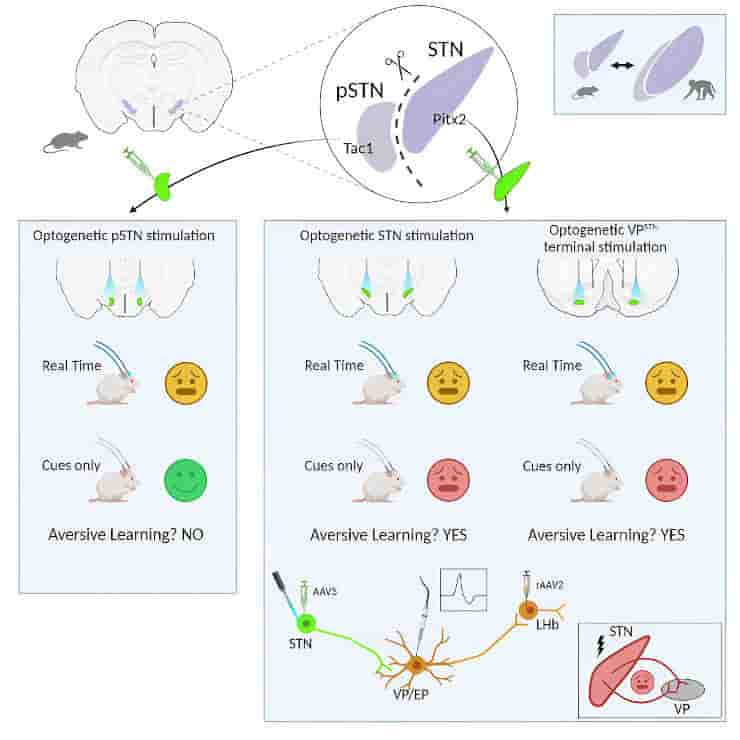Researchers have located a neural circuit within the brain that, when activated, generates a profound sensation of discomfort. Additionally, this discovery enables them to demonstrate for the first time that the subthalamic nucleus, a cerebral structure responsible for regulating voluntary movements, might potentially contribute to the pathogenesis of depression. The results could lead to better treatments for Parkinson’s disease.
“Our study shows that a specific region of the brain is involved in aversion and avoidance behavior when stimulated. We’ve studied how mice behave when the subthalamic nucleus is activated using optogenetic stimulation,”
explained lead author Åsa Mackenzie, Professor at the Department of Organismal Biology at Uppsala University.
Aversion Activation
 Previously, the research group found that when the subthalamus is stimulated in mice, the mice try to avoid the stimulation. In the new study, they were able to show that this behavior is linked to aversion and that the avoidance behavior not only takes place while the subthalamic nucleus is activated, but also that the discomfort lingers in the memory.
Previously, the research group found that when the subthalamus is stimulated in mice, the mice try to avoid the stimulation. In the new study, they were able to show that this behavior is linked to aversion and that the avoidance behavior not only takes place while the subthalamic nucleus is activated, but also that the discomfort lingers in the memory.
When the mice were placed in the same environment again, even though the stimulus had been turned off, they displayed the same extreme avoidance response. As a result, the linkages were strong enough to keep the behavior going.
Aversion is the opposite of reward and plays an important role in making us avoid things that make us feel bad. Strong activation of the aversion system in the brain has been linked to depression in humans.
Important Finding
Together with identifying the area of the brain where aversion is located, the researchers have now located neural circuits in the subthalamic nucleus that link directly to the brain’s emotional system, which is activated during intense discomfort.
“That the subthalamus gives rise to aversion and avoidance behavior is an important finding for two main reasons. It increases our understanding of the brain’s emotional system and how brain activity can lead to psychiatric symptoms such as depression and apathy. Second, it may explain why people with Parkinson’s disease treated with deep brain stimulation (DBS) can experience these kinds of side effects,
said Mackenzie.
Brain Stimulation Side Effects
Since the subthalamus is hyperactive in Parkinson’s disease, stimulating it with DBS using implanted electrodes “corrects” this and eliminates tremors and other motor issues in patients with severe Parkinson’s disease.
The treatment often works very well. However, some patients experience side effects such as severe depression.
“Now that we can show the subthalamus has a direct link to aversion and connects to the depression center of the brain, we can neurobiologically understand and explain these side effects. In addition to Parkinson’s disease, subthalamic DBS is also used in cases such as essential tremor and obsessive-compulsive disorder,
Mackenzie said.
The work represents basic research that lays the foundation for greater therapeutic precision in these medicines. The goal is to have deep brain stimulation relieve illness symptoms without creating severe negative effects.
Reference:
- Gian Pietro Serra et al. A role for the subthalamic nucleus in aversive learning. Cell Reports (2023). DOI: 10.1016/j.celrep.2023.113328
